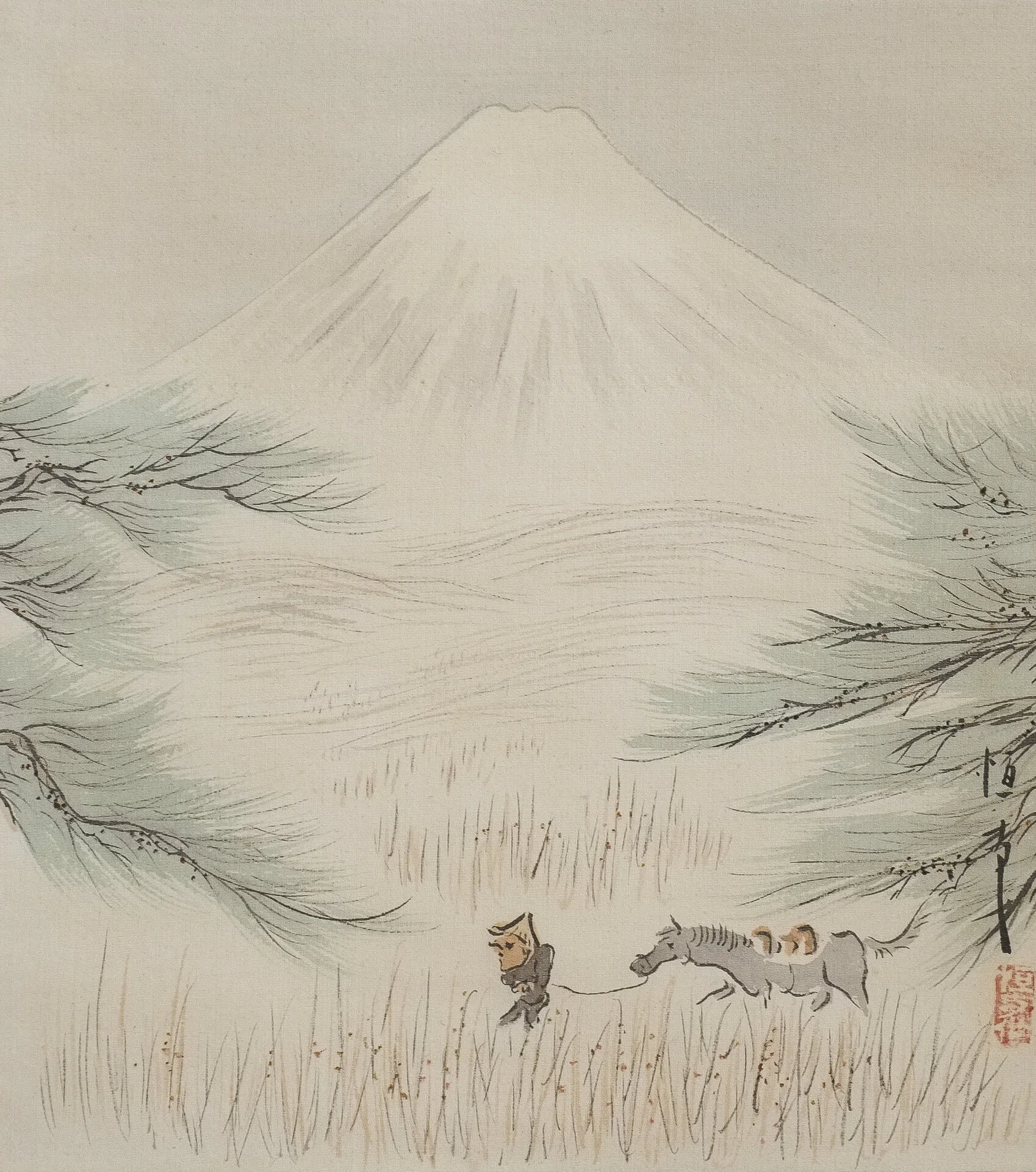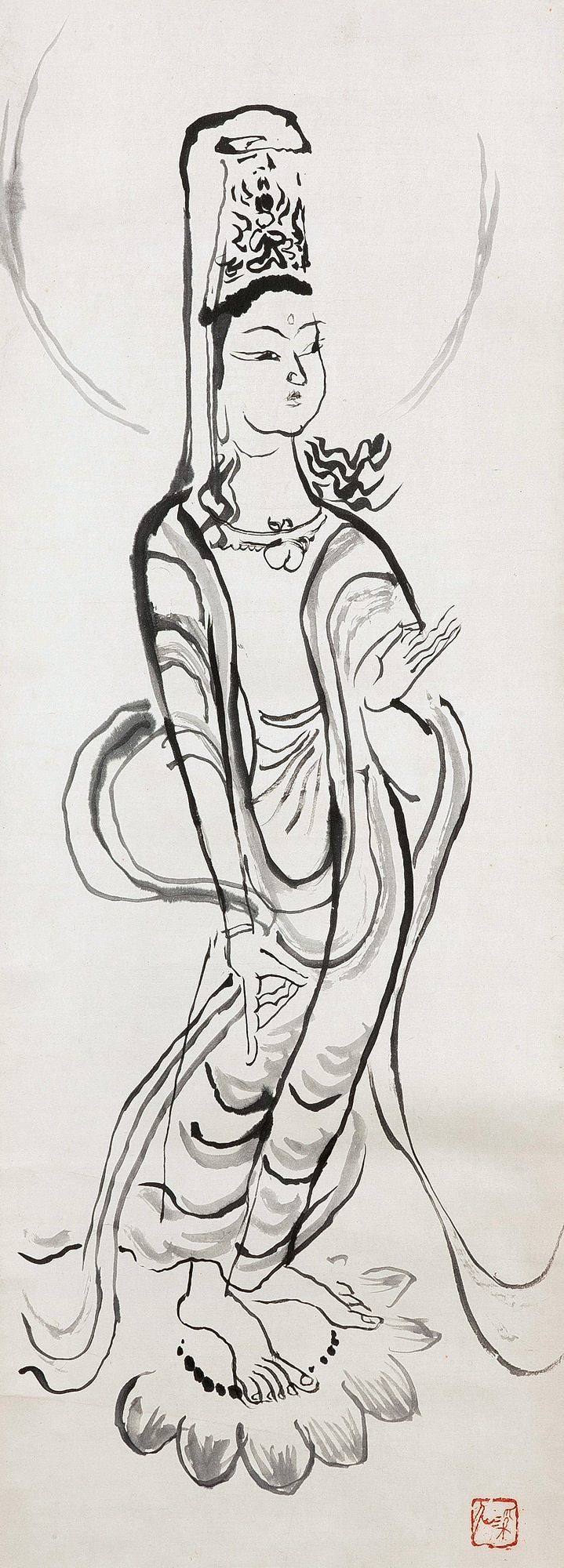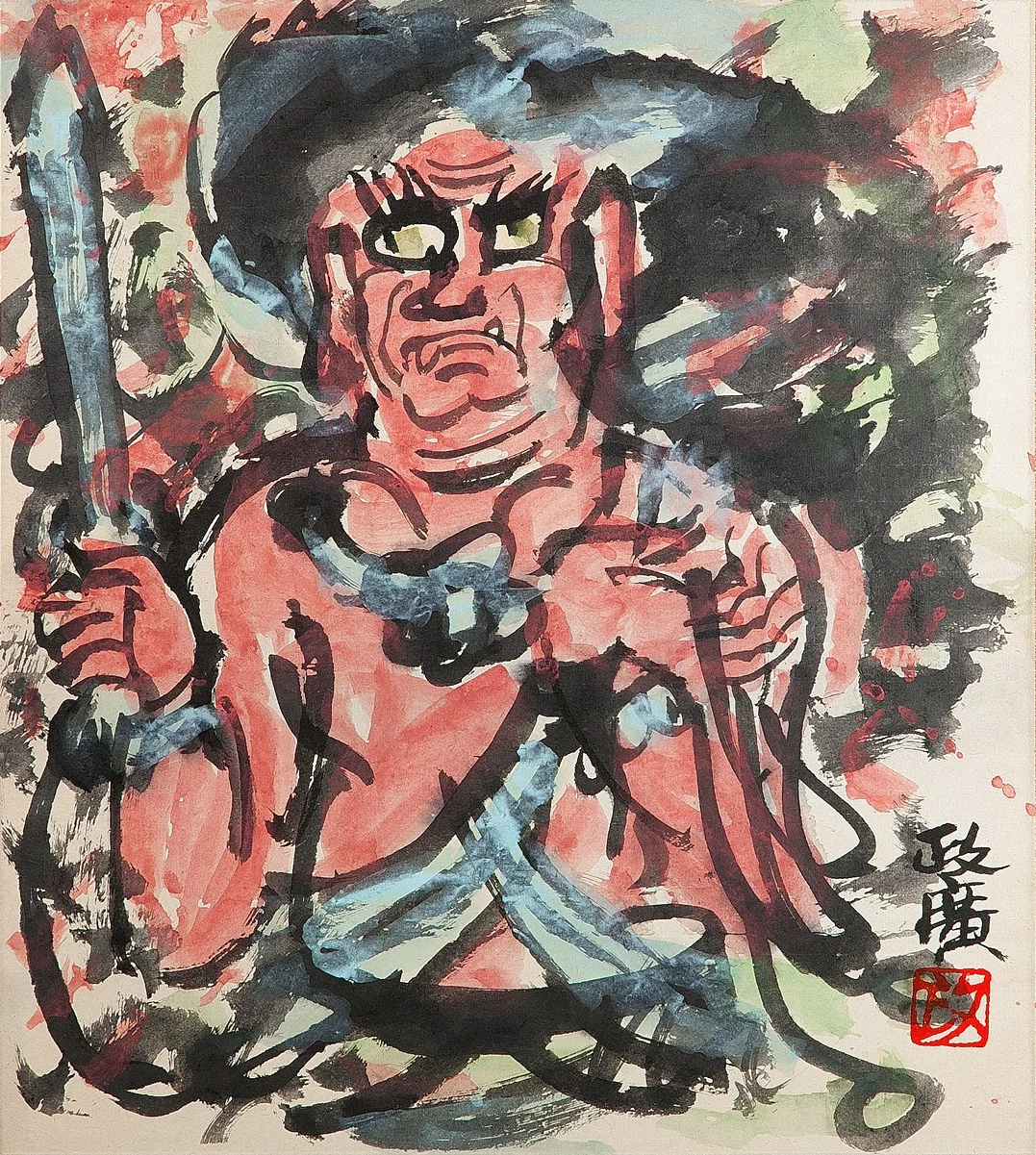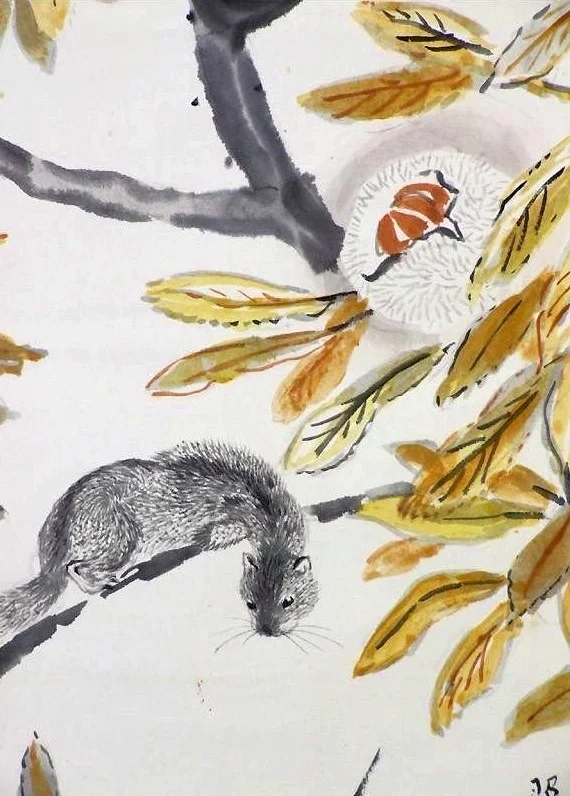Kondo Koichiro 近藤浩一路 (1884-1962), Shirakawa Women, Showa Period. Ink and pigment on gilt paper, 34 x 22 cm., framed.
Kondo Koichiro practiced both Western-style painting and traditional Japanese-style painting, but he was best-known for his popular manga (cartoons), which appeared in books and newspapers throughout his career.
He was born in the village of Mutsuai (the present-day town on Nanbu) in Yamanashi Prefecture; his birth name was Kondo Hiroshi. He studied Western painting at Tokyo Art School (the present Tokyo University of the Arts) with Kuroda Seiki (1866-1924), a leader of the Western-style painting movement in Japan, and Wada Eisaku (1874-1959,) another well-known Western-style painter. After his graduation in 1910, Kondo practiced Western-style painting and drew manga and illustrations for the Yomiuri Shinbun and Asahi Shinbun newspapers.
Around 1915, he joined the Sango-kai (Coral Society), an organization of Japanese-style painters, which counted Ikeda Eiji (1889-1950), Ogawa Usen (1868-1938), Ogawa Senyō (1882-1971), Kawabata Ryushi (1885-1966), Tsuruta Goro (1890-1969), Natori Shunsen (1886-1960), Yamamura Toyonari (1885-1942), Morita Tsunetomo (1881-1933) and Ishizuka Kan (active c. 1915) as members. In 1919 he started entering his distinctive Japanese-style landscape paintings in the exhibitions of the Japan Art Institute, which he later joined. He exhibited regularly in the institute’s Inten exhibitions until his resignation from the group in 1936, after which he shunned membership in any artistic group.
Kondo traveled extensively throughout Japan, including a 1917 trip to Hokkaido to sketch the Ainu people. He also traveled to China and, inspired by his teachers, traveled to Europe in 1922 and to Paris in 1931. It was during the 1931 trip that he captured the attention of the French novelist André Malraux, who based the character Kama, a Japanese-style ink painter, in his 1933 novel Man's Fate (La Condition Humaine), on Kondo. His trips to Europe are credited with his abandoning of Western-style painting in favor of traditional Japanese-style ink painting integrated with Western pictorial techniques.
Manga was a major part of Kondo's artistic output and income, and he went on to found the Nippon Manga-kai (Japanese Manga Society) with Naraharu Ikeda (1889-1950) and Okamoto Ippei (1886-1948), one of the forefathers of modern manga. He and Okamoto became well-known for their "manga scribblings," and with Okamoto he produced manga versions of Natsume Soseki's novels Botchan and I am a Cat.
In 2006 the Nerima Art Museum in Tokyo celebrated the 120th anniversary of Kondo Koichiro's birth with a comprehensive exhibition, All About Koichiro Kondo, which 120 works spanning the artist’s oil paintings, watercolors and cartoons.
The artist's works are in the collection of the National Museum of Modern Art, Tokyo, the Yamanashi Prefectural Museum of Art and many others.
Inquire











































































































